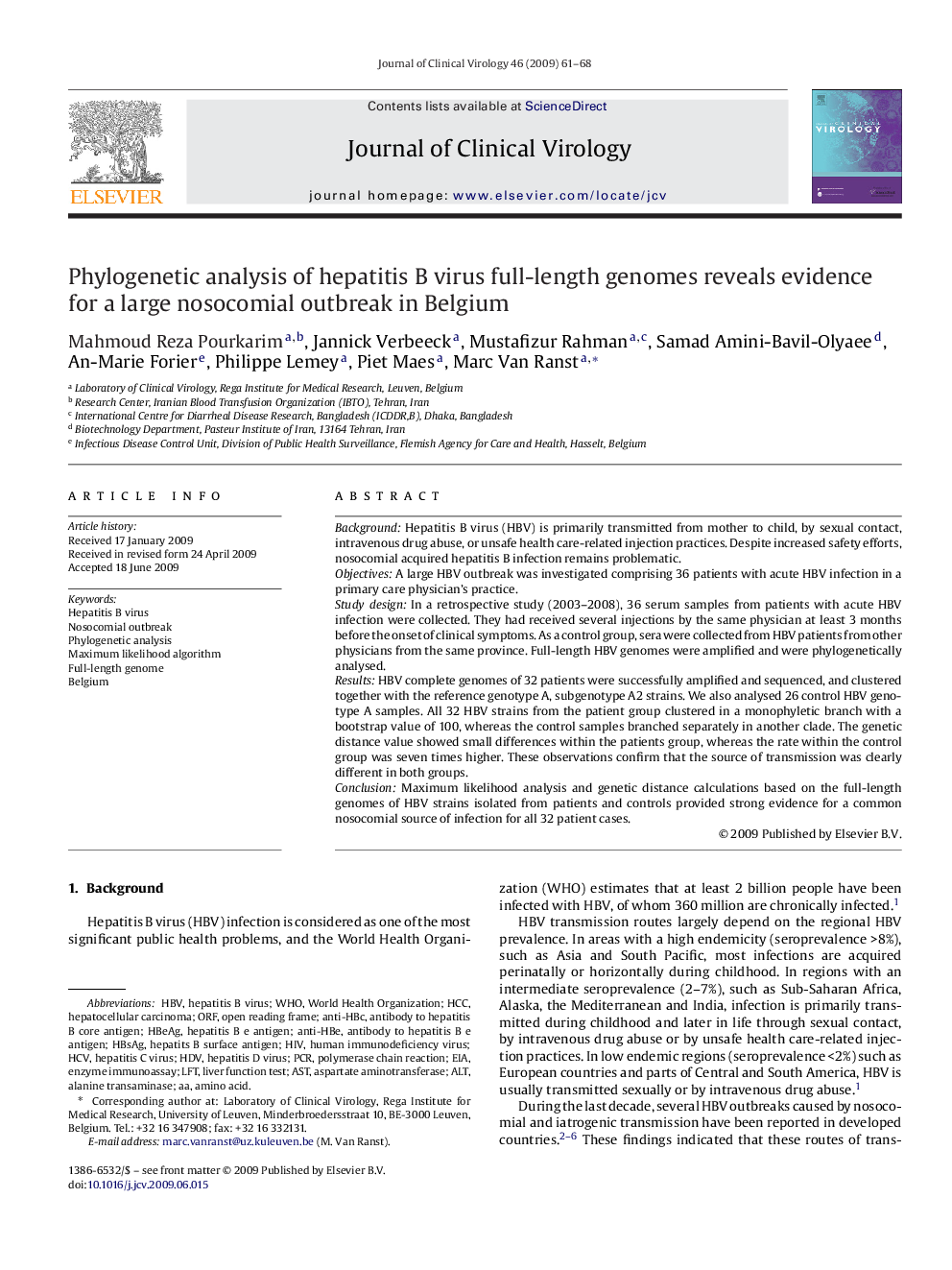| Article ID | Journal | Published Year | Pages | File Type |
|---|---|---|---|---|
| 3369757 | Journal of Clinical Virology | 2009 | 8 Pages |
BackgroundHepatitis B virus (HBV) is primarily transmitted from mother to child, by sexual contact, intravenous drug abuse, or unsafe health care-related injection practices. Despite increased safety efforts, nosocomial acquired hepatitis B infection remains problematic.ObjectivesA large HBV outbreak was investigated comprising 36 patients with acute HBV infection in a primary care physician's practice.Study designIn a retrospective study (2003–2008), 36 serum samples from patients with acute HBV infection were collected. They had received several injections by the same physician at least 3 months before the onset of clinical symptoms. As a control group, sera were collected from HBV patients from other physicians from the same province. Full-length HBV genomes were amplified and were phylogenetically analysed.ResultsHBV complete genomes of 32 patients were successfully amplified and sequenced, and clustered together with the reference genotype A, subgenotype A2 strains. We also analysed 26 control HBV genotype A samples. All 32 HBV strains from the patient group clustered in a monophyletic branch with a bootstrap value of 100, whereas the control samples branched separately in another clade. The genetic distance value showed small differences within the patients group, whereas the rate within the control group was seven times higher. These observations confirm that the source of transmission was clearly different in both groups.ConclusionMaximum likelihood analysis and genetic distance calculations based on the full-length genomes of HBV strains isolated from patients and controls provided strong evidence for a common nosocomial source of infection for all 32 patient cases.
